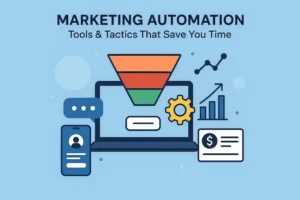At Kiwi Web Solutions, we think that web design should focus on making inclusive, accessible experiences for all users rather than just developing aesthetically beautiful websites. This vision leads us to a critical aspect of web design – accessibility.It’s a frequently disregarded feature, but we think it merits further examination. So let’s dive deeper into understanding web design accessibility and how to ensure our digital solutions are inclusive.
Table of Contents
ToggleUnderstanding Web Design Accessibility
Web accessibility refers to the design and development practices that ensure people with disabilities can use and navigate websites without barriers. It’s about making websites usable for everyone, regardless of whether they have physical, cognitive, or sensory disabilities. When we consider web accessibility, we’re considering an all-encompassing user experience.

Get a Free Website Audit Today
Why is this important?
Besides the moral imperative of inclusion, there’s also a legal aspect. Legal repercussions might ensue if the Web Content Accessibility Guidelines (WCAG) are not fully followed. The WCAG set up a path for ensuring that web content is accessible to everyone. The WCAG establish a path to guarantee that web content is accessible to everyone. More so, it’s beneficial from a business perspective. Accessible websites have a broader reach, can improve SEO rankings, and contribute to better overall user experience.
Key Aspects of Web Design Accessibility
Text Accessibility: Text is a core component of web content, and its accessibility starts with font choice. Avoid ornate fonts and aim for clarity and legibility. Consider color contrast between text and background – WCAG recommends a contrast ratio of at least 4.5:1 for normal text. Use headings to structure content logically, making it easy for screen readers to navigate.
Non-text Content: Images, movies, and audio files are included in this. For images, provide alternative text (alt text) describing the image for screen readers. Videos should have captions or a transcript for hearing-impaired users. Provide an audio description if necessary to explain vital visual elements in videos.
Navigability: Navigability implies how easy it is for users to move around your website. This includes logical organization, clear instructions, and consistency in design elements. Keyboard accessibility is also critical as some users may not use a mouse.
Forms and Controls: Ensure that all forms, buttons, and controls are accessible. Use appropriate labels for form fields. For interactive elements like buttons or dropdowns, ensure they can be operated using a keyboard.
Designing for Inclusion
With the basic understanding of web accessibility, let’s discuss some strategies to create more inclusive web designs.
User Testing: Regularly test your website with users who have different abilities. Involve them in the design process and gather feedback on the accessibility of your website.
Universal Design: Universal design is the concept of creating environments that are usable and effective for everyone. It’s not about creating a separate solution for different abilities but about designing a solution that works universally. This means considering color blindness, visual impairment, hearing impairment, cognitive impairment, and physical disability from the initial stages of design.
Employ Assistive Technologies: Assistive technologies such as screen readers, Braille terminals, and voice recognition software play a vital role in making websites accessible. Understand how these technologies work and design websites that can leverage these tools effectively.
Continuous Learning and Updating: Web accessibility is not a one-time activity but a continuous process of learning and improving. Keep up-to-date with WCAG and other accessibility standards and guidelines. Regularly review and update your website to address accessibility issues.
At Kiwi Web Solutions, we believe that an accessible web is a better web. Although it may seem like a difficult effort, ensuring web design accessibility is important and worthwhile. It fosters an inclusive environment where everyone can participate equally and benefits businesses by increasing their reach and improving their user experience.
Let's Grow Your Business Together
Think about that the web’s universality is among its greatest assets. The World Wide Web website asserted that “the greatest strength of the Web is in its universality.” Access must be available to everyone, regardless of disabilities. So let’s keep innovating and creating while always keeping accessibility in mind. Because an inclusive web is a better web for everyone




